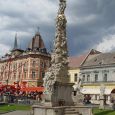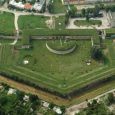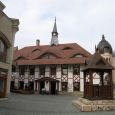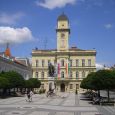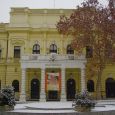Komarno
Advertisement
By Air
Airports nearest to Komarno are sorted by the distance to the airport from the city centre.
Per Airport (distanced approximately 29 km)
Papa Airport (distanced approximately 66 km)
Azentkilyszabadja Airport (distanced approximately 78 km)
Tokol Airport (distanced approximately 79 km)
Budapest Deli Railway Airport (distanced approximately 80 km)
By Train
In the early nineties ran track reconstruction sections which zapricinovala delayed trains or a premium on driving times already in the construction timetable.Last year was finally the speed passenger transport.Only a few trains still has a little longer stays for cruising.Motor carts series 810 series wagons with trailers Baafx but satisfying neither its performance nor provided for the convenience of passengers for transport to such a long time.New quality in passenger traffic on the track brought jubilujucej replace some hurried passenger trains passenger trains running on the route Bratislava New Town Komarno-Dorog-Budapest.
By Road
Roads Komarom - Komarno - N.Locks I/64, Bratislava - D.Wednesday - Komarno - Sturovo I/63, Komarno - Kolarovo II/573, navigation of the Danube, Bratislava - Sturovo.
Advertisement
Statue of St. Mary and Holy Trinity
Pillars of the St. Mary and Holy Trinity are a type of free-standing columns with Christian themes.Also known as the Plague Column or the type of dedication as Marian and Trinitarian columns.The building was expanded way of manifestation of faith in Catholic countries, especially in the 17th and 18th century.These columns have thus become one of the most visible features of Baroque architecture.Marian column was built to honor the Virgin Mary often a sign of gratitude for the completion of plague or other relevant advice.The purpose of the pillars of the Trinity was usually a celebration of church and faith motive of the sea but can also sometimes play a role.
Komarno Fortress
Until the end of the Middle Ages the small firearms had no particular importance as the arrow of an English archer in the battle went as far as the bullet of the firearm at Waterloo and perhaps hit the target more accurately though not with the same efficiency.Although the field guns were at the beginning of their development, the heavy artillery guns had already made wide cracks on the walls of the castles.The French attacks against Italy between 1484-1493 proved that the fortress bastions built in the Middle Ages were not able to withstand the more powerful artillery.By inventing the cannon, the basic principles of the castle and fortress building had changed all over the world.
Danube museum
Danube museum since its founding in 1886 until the end of World War II developed its activities within the museum and educational associations.The most significant was Jokai education and the Museum Association, which worked in 1911-1945.Since 1948 the building was located in the Museum District Association in Komarno in 1949 renamed the Museum of Danube.Museum professionally processes and makes available documents on the development of nature and society south of the Danube plain and the development of Hungarian national culture in the Slovak Republic.The museum's collection includes 125 159 subjects of the collection is presented in six permanent exhibitions.Rare is a collection of Roman, who is also the oldest museum collection.The Museum hosts 10-12 exhibitions annually.In 1972 was founded Circle of friends of the museum whose members are involved in the acquisition of the museum.
Jokai Theatre
Originally established in 1952 as the Hungarian Provincial Theatre, Jokai Theatre Komarno is a professional theatre company which performs in the Hungarian language.Since the theatre plays especially for citizens of Hungarian nationality living in Slovakia, its repertoire consists of plays or dramatisations of novels by Hungarian authors.The theatre's curved auditorium seats 640 people including the gallery.The two-storey theatre building includes a ballroom decorated with caryatids and plaster strips.
November - March
Information not available
Advertisement

